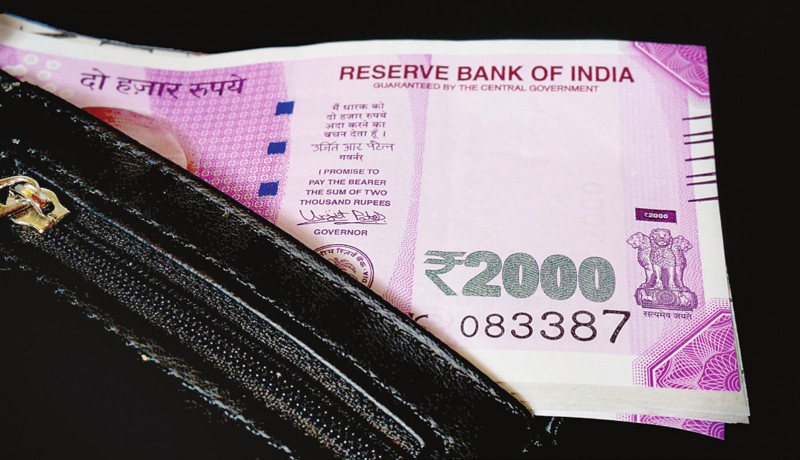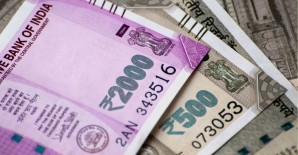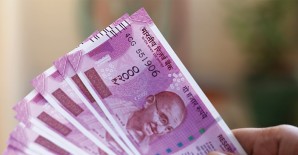
Money

Economist Priya Desai analyses tax benefits for silvers in Budget 2018
An annual Budget is the harbinger of expectations and excitement; some good news and some not so good. Everybody—from the common man and corporate honchos to silvers—waits with bated breath for the Budget to learn what is in store for them, besides hoping it will rein in inflation. While taxpayers eagerly await the enhancement of tax exemption limits and tax-saving solutions, companies look for a reduction in the burden of taxes on industries.
In a break from routine, this year the Budget was presented on 1 February, a month before its regular date. Being the last pre-election Budget, it was expected to be peppered with a heavy dose of populism. Were the expectations of silvers fulfilled? Will they be able to reap the benefits? Let’s take a closer look.
THE BACKDROP
The year gone by was replete with uncertainties and anxieties. The introduction of the Goods and Services Tax (GST) rolled in a lot of unease for virtually everybody—consumers, producers, marketers as well as distributors had reservations about this tax. It also meant a dip in the Government’s tax collections, resulting in higher inflation, further adding to the woes of the common man.
It was natural for people to look for sops to help them fight the income versus expenditure battle. With incomes dwindling drastically and expenditures shooting through the roof, the fight was a tough one for silvers. Just imagine the plight and agony of those in their late 70s, who had to pay 25 per cent more than their existing mediclaim premium to ensure the continuity of their health cover.
Despite being a large voter constituency, silvers have always lacked lobbying power. So, when Finance Minister Arun Jaitley said during his speech, “To care for those who cared for us is one of the highest honours”, it was music to their ears.
WHAT IS ON OFFER?
The Budget introduces no change in the present tax structure of individuals. However, it has provided a standard deduction of ₹ 40,000 to senior pensioners. This is available to all salaried people in lieu of the present transport allowance and reimbursement of miscellaneous medical expenses’ exemptions. With the lofty intention of providing a life of dignity to silvers, the following incentives will be available while filing tax returns for the next financial year.
1. Interest income exemption limit enhanced
- The exemption limit on interest income earned on deposits with banks and post offices has been increased to ₹ 50,000 from ₹ 10,000.
- No TDS needs to be deducted from this income under Section 194A.
- All fixed deposits and recurring deposit schemes are covered under the ambit of this benefit. Therefore, the tax benefit can range from ₹ 4,000 to ₹ 12,000 depending upon the senior citizens’ income slab and tax liability.
2. Medical benefits
- The deduction limit for health insurance premium and/or general medical expenditure has been raised to ₹ 50,000 from ₹ 30,000, under Section 80D. This translates into a tax benefit of ₹ 2,000 to ₹ 6,000 depending on the taxable income slab.
- In case of critical illnesses, all senior citizens will be entitled to a medical expense deduction limit of ₹ 100,000 under Section 80DDB.
- The earlier distinction between senior citizens (deduction limit ₹ 60,000) and very senior citizens (deduction limit ₹ 80,000) stands eliminated.
- Tax savings can extend up to ₹ 12,000 in case of use.
3. Extension of Pradhan Mantri Vaya Vandana Yojana
- A senior citizen savings scheme called Pradhan Mantri Vaya Vandana Yojana was introduced in 2017; it has now been extended up to March 2020.
- Under the scheme, Life Insurance Corporation of India provides an assured return of 8 per cent.
- The investment limit has been increased to ₹ 1,500,000 from ₹ 750,000. A small benefit in terms of assured interest is the highlight of this extension.
HOLES IN THE BUCKET
1. Imposition of Capital Gains Tax
The past two years saw a massive reduction in the interest rate on fixed and other deposits, which resulted in a hefty loss of regular income for most silvers. On the other hand, stock markets boomed. This encouraged some silvers to start dabbling in equities by resetting their asset allocation to make up for the lost income from fixed deposits. Many have been investing in equity-oriented mutual funds for a long time now. For instance, many silvers have invested in Mastershares as a regular source of income as they ensure the possibility of gain with no tax on long-term capital gains. The dividend from mutual funds was tax-free too. The 2018 budget wrung out this flexibility from the tax scenario by introducing changes in capital gains tax aspects such as:
- Long-term capital gains from listed equities will be under the tax net from the next financial year.
- Long-term capital gains in excess of ₹ 100,000 will be taxed at the rate of 10 per cent.
- No indexation benefit will be available. The Finance Minister has offered a sop to investors by introducing the concept of grandfathering—an exemption that allows persons or entities to continue with operations that were approved before the new rule came into force. This means all gains up to 31 January 2018 will be grandfathered.
To quote from the speech, “If an equity share is purchased six months before 31 January 2018 at ₹ 100 and the highest price quoted on 31st January 2018 with respect to this share is ₹ 120, there will be no tax on the gain of ₹ 20 if this share is sold after one year from the date of purchase. However, any gain in excess of ₹ 20 earned after 31 January 2018 will be taxed at 10 per cent if this share is sold after 31 July 2018.” There is no change in the definition of short-term gains and the tax rates applicable to them will continue to stand at 15 per cent.
2. Dividends from mutual funds under attack
A tax of 10 per cent has been introduced on distributed income by equity-oriented mutual funds, which will result in the paring of mutual funds’ dividends. This will have an adverse effect on this regular source of income for many silvers. They would also be liable to pay a long-term capital gains tax when a fund is sold after one year.
3. Upping the cess
The current 3 per cent education cess has been renamed ‘health and education cess’ with an additional 1 per cent. Now a total of 4 per cent is to be levied on the tax payable.
IS IT A ZERO-SUM GAME?
The Budget is a very complicated exercise; while it generously gives with one hand, it cruelly takes away with the other. In the current Budget, the scales are clearly tilted in favour of the Government; it has opened up avenues for it to earn additional revenue and achieve stated goals.
However, silvers have very restricted budgets with very limited components; their only objective is to determine how to make ends meet. Asset composition, allocation and sources of income vary from individual to individual, too, and there is no concept of one size fits all.
Here is an example to illustrate this point: A Mediclaim of ₹ 500,000 from New India Assurance Company will attract a premium of ₹ 42,000 (for a 78 year-old) in 2018 compared to ₹ 32,000 in 2017. The new premium deduction limit will offer a tax relief of ₹ 2,000 for 10 per cent. But this does not take away from the fact that he/she will still be short of ₹ 8,000; also, the tax relief doesn’t compensate for the exorbitant increase in premium.
But there are also millions of silvers that don’t have Mediclaim cover for whom this holds no relevance. Those who invest in equities and mutual funds, too, will have to rework their investment arithmetic and how the gain-loss equation pans out for them. The low level of financial literacy will certainly be a hindrance in arriving at smart investment decisions.
A BETTER ALTERNATIVE
Something is better than nothing, goes an old adage. The smattering of relief doled out to silvers is definitely welcome. However, in an increasingly adverse financial environment, silvers need some tangible relief that allows them to live with dignity.
A higher income exemption limit of about ₹ 600,000 is one such alternative that may provide the foundation for a life of dignity for silvers in an environment where there is a yawning gap between income and expenditure. Life isn’t a bed of roses for silvers, but is it too much to ask for at least a whiff of those roses? A Budget that aims for this will bring smiles back on the faces of silvers.
The author is an economist based in Mumbai
Photo: 123RF.com Featured in Harmony — Celebrate Age Magazine March 2018
you may also like to read
-
Pension hike
The stage is set for a manifold hike in pension for private-sector employees with the Supreme Court quashing a special….
-
Budget 2019: ‘A big let-down’ for silvers
The verdict is out: Experts Harmony-Celebrate Age spoke to termed Budget 2019 ‘a big let-down’ for silvers. The only saving….
-
Silvers seek sops in health sector in Budget 2019
Relief in the healthcare sector seems to be uppermost in the minds of silvers on the eve of the unveiling….
-
Cheer for pensioners
The Union Government has launched Sampann (system for accounting and management of pension), a pension management software to aid and….







